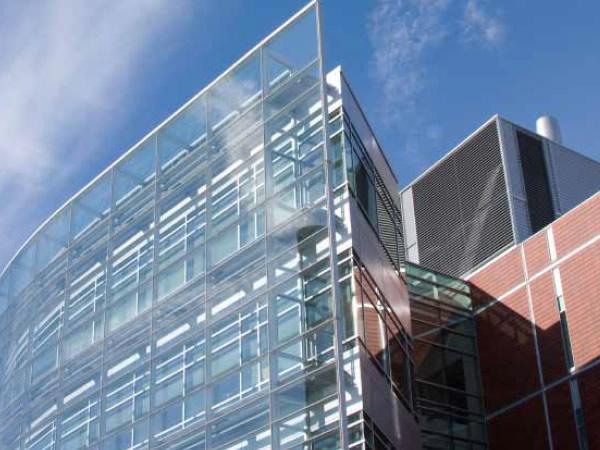
Date: 10 November 2016
Buildings account for about 40 % of the total energy consumption in Europe. If Europe is to achieve its decarbonisation goals and to contribute fully to the realization of the Paris agreement, reducing the energy needs from buildings is a necessity.
This can only be done by improving the energy performance of the building envelopes as only a well-designed building can ensure effective synergies e.g. with renewable energy sources.
To our associations, a reformed and strengthened EPBD is therefore timely and should give substance to the ‘Energy Efficiency First’ principle and the suggested focus on energy need reduction in buildings, as defined in the Energy Union.
Together - European Aluminium, EuroWindoor, ES-SO, Glass for Europe - we would like to stress that windows and glazed areas in buildings are essential to the overall energy performance of buildings but also to the general comfort and well-being of people living and working in these buildings.
To reap these distinctive benefits of modern windows, the EPBD needs to be reformed, in particular to ensure the energy performance of glazed areas is fairly assessed and to put in place the right mechanisms and incentives for market actors to deliver massive energy savings.
The revision of the EPBD is a unique opportunity to optimise the energy performance of buildings, as well as cost optimality. When revising the Directive, our sector considers that the following key points should be strengthened or included:
- Increasing the renovation rate of European buildings to obtain larger energy use reductions
- Using the energy balance approach to assess the energy performance of windows
- Recognising the benefits of daylight, natural ventilation and solar management
1. Increasing the renovation rate of European buildings to obtain larger energy use reductions
The EPBD has helped to improve the energy performance of new buildings, but has not significantly improved the building envelope of existing buildings since the rate of building renovation in the EU is low and stagnating (<1.2% per year).
Triggering renovations in Europe is key in obtaining large energy use reductions as new buildings do not represent more than 1,5% of the European housing stock.
When it comes to windows, it is estimated that 85% of glazed areas in Europe’s buildings are outdated1, either single glazing or early uncoated double glazing.
(1 TNO Built Environment and Geosciences – Glazing type distribution in the EU building stock – TNO report TNO-
60-DTM-2011-00338.)
This is for instance due to the fact that windows stay on a building for 40 years until they are replaced by new ones.
Renovation is triggered by different factors, of which the wish of saving energy and improving indoor comfort are two very important.
The revised EPBD should therefore create strong incentives for the renovation of the existing building
stock and their windows in a cost-effective way:
- The European Commission should provide guidance to Member States to set specific plans to phase out inefficient windows. For instance, specific replacement requirements for windows or retrofitting programmes should be set up in national renovation plans.
- In order to boost investments in energy efficient renovation projects, the Energy Performance Certificates (EPCs) should evolve and become a building passport providing tailor-made recommendations for gradual energy efficiency and indoor comfort improvements. EPCs should include an assessment of energy performance improvements induced by new windows based on energy balance. This will trigger financial investments for proper component replacement.
- A long-term policy framework regarding energy efficiency in buildings should be ensured to support investments in energy savings:
- Stability in financial mechanisms must be ensured and the access to them simplified.
- Subsidies for component replacement should be linked to energy efficiency requirements tailored to local needs and environment, and based on windows’ energy balance (see item 2 below).
- Member States should be encouraged to consider window replacement in the list of energy efficiency measures financially supported.
2. Using the energy balance approach to assess the energy performance of window products
In addition to their insulation properties windows provide daylight and solar heat gains to buildings and allow for natural ventilation (e.g. ventilative cooling).
However, the assessment of the energy performance of glazed areas in national cost-optimal calculation methods is too often merely based on insulation properties, i.e. the thermal transmittance (U-Value), while there is also need to consider the heat gains (g-value) for the energy performance of transparent components of the building envelope.
For this reason, windows’ energy performance is best assessed by way of the ‘energy balance’, which is an equation computing heat losses and heat gains based on the climatic conditions.

Adopting the so-called energy balance approach would give a more correct picture of the performance of windows in their specific environments. It would greatly benefit the energy performance of buildings in a more cost-optimal manner.
Particularly, because it considers solar gains from windows, the energy balance approach helps valuing free solar heat during heating season and overheating prevention technologies (be they solar control glass, dynamic shading, dynamic glazing etc.) during cooling season.
The upcoming revision of the EPBD will be an excellent opportunity to strengthen the implementation of the Directive and to stress the importance of applying an elaborated energy balance approach for the evaluation of transparent components of the building envelope:
- The revised Directive (updating of article 4 and 7 of EPBD) should require Member States to review their calculation methods, and apply the energy balance approach specified in the specific heating and cooling context of the Member State, for the evaluation of windows. The same should apply when setting minimum performance requirements for the replacement of windows.
- The European Commission should publish a guidance document explaining how Member States can concretely implement this approach in practice.
3. Recognising the benefits of daylight, natural ventilation and solar management
People spend up to 90% of their time in buildings but many existing European buildings suffer from poor daylight and indoor climate with adverse effect on health, well-being and productivity.
Member States should include in their cost-optimal calculations the economic benefits provided by daylight in terms of reducing energy consumption for lighting: this parameter is already taken into account when it comes to evaluating the energy performance of commercial buildings and should therefore be extended to residential dwellings.
Additionally, the benefits of daylight and views to the outside world on humans are extremely well documented.
Furthermore, as summer comfort is becoming more and more important in Europe, overheating prevention technologies (be they solar control glass, dynamic shading, dynamic glazing etc.) and natural ventilation should also be taken into account.
It reduces energy consumption for buildings equipped with air conditioning, and improves comfort for buildings not equipped with air conditioning.
Therefore, specific measures could be defined in a revised EPBD or incentivised at Member States level to ensure appropriately glazed buildings that guarantee comfort and well-being to occupants:
- Member States should be invited to put in place within their national or local building codes either requirements on daylight factor or minimum glazed surface to floor ratio. Requirements on Daylight factor should be based on the upcoming CEN Standard prEN 17037 Daylight of Buildings.
- For new buildings and major renovations, calculations of daylight, solar management and natural ventilation (ventilative cooling) should be included to allow for accurate predictions of energy demand for cooling and heating.
- The European Commission should publish a guidance document for Member States to set daylight requirements in building codes.
 600450
600450








Add new comment